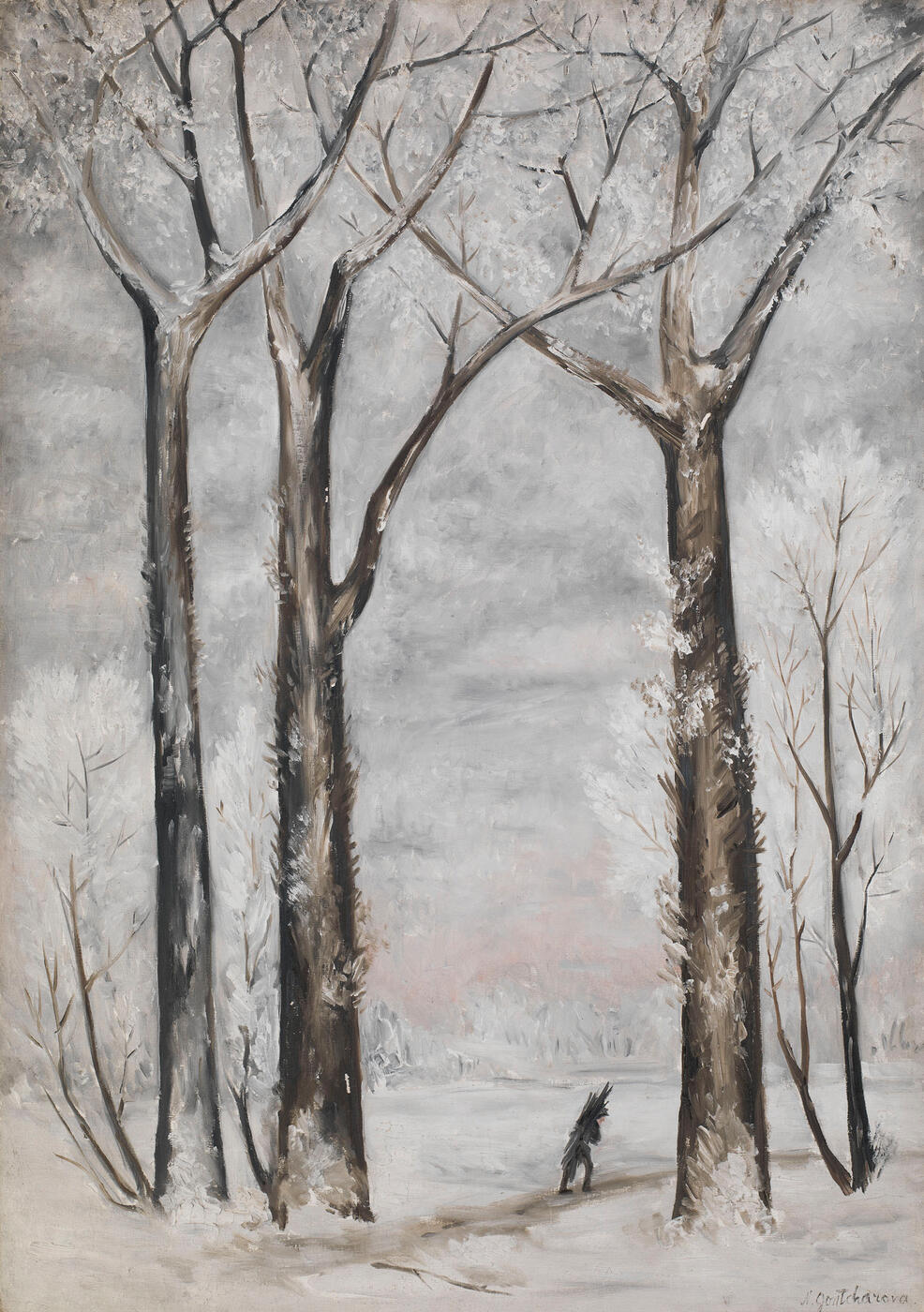26 November 2014 Russian Art Auctions
26 November 2014

§ 48. GONCHAROVA, NATALIA (1881-1962)
Hiver, signed, also further signed, titled and numbered "No 26" on the reverse.
Oil on canvas, 92 by 65 cm.
350,000-500,000 GBP
Provenance: Collection of the artist, until c. 1961.
The Russian Sale, Bonham’s, 24 November 2008, lot 40.
Acquired at the above sale by the present owner.
Private collection, UK.
Exhibited: Zolotoe runo, Moscow, 27 December 1909–31 January 1910.
Larionov and Goncharova. A Retrospective Exhibition of Paintings and Designs for the Theatre, The Arts Council of Great Britain, City Art Gallery, Leeds; City Art Gallery, Bristol; Arts Council Gallery, London, 9 September–16 December 1961 (label on the reverse).
Literature: Exhibition catalogue, Katalog vystavki kartin “Zolotoe runo” , Moscow, Tipografiya tovarischestva Kushnerev i K, 1909, No. 7, listed.
Exhibition catalogue, M. Chamot, C. Gray, eds., Larionov and Goncharova. A Retrospective Exhibition of Paintings and Designs for Theatre, London, Graphis Press, 1961, No. 89, illustrated and listed.
I. Gofman, “Zolotoe Runo”, illiustrirovannoe izdanie, Moscow, Russkiy Raritet, 2007, p. 433, listed on the reproduced page from the 1909 Zolotoe Runo catalogue.
Hiver by Natalia Goncharova, first published during her lifetime, was one of the works the artist herself picked for her’s and Mikhail Larionov’s retrospective exhibition of paintings and theatre designs that took place in London in 1961. It is a typical example of the oeuvre of one of the greatest masters of Russian avant-garde.
In traditional iconography, wood gathering is an allegory of winter. Starting from the Hesiod poem Works and Days the image of a woodcutter or a peasant picking brushwood in a winter forest became a source of inspiration for numerous variations on the “seasons” subject in European art. This is exactly how Goncharova first approached this topic in the 1910s, producing a small series of works. The best-known of these is Winter. Collecting Brushwood (1911, The State Tretyakov Gallery), which, together with Hay Cutting (1911) and Peasants Picking Apples (1911), is conventionally considered a part of the series dedicated to seasonal rural work.
It was not unusual for Goncharova to revisit the same topic over and over again. The artist strives to saturate the subject to the absolute limit, until the quantity of finished works that modify the same motif within a broader topic inevitably evolves into a new painterly quality; and vice versa. Sometimes, having achieved a new level of artistic understanding, she would feel an urge to go back to her avant-garde works and rewrite the subject from scratch, looking at it from the vantage point of her new identity.
Removed from the context of a yearly cycle, the work acquires a symbolic resonance, which highlights the irrationality of reality, as well as the topic of the twilight years of a lonely existence. The subdued palette, balanced composition and inherent calmness form a harmonious whole in the picture.
Contrasting combinations and blending of the grey and white shades in this work are built upon a system of delicate interrelations of shades of the same colours – as if the artist is testing them to the very limit.
Hiver is not just one of Goncharova’s early comments on her classical topics of the 1910s, but also is a product of their painterly and symbolic reinterpretation of the traditions of the European art, and one of the ultimate wholesome works by the artist created during the most productive time of the experiments of the Russian avant-garde.
Notes on symbols:
* Indicates 5% Import Duty Charge applies.
Ω Indicates 20% Import Duty Charge applies.
§ Indicates Artist's Resale Right applies.
† Indicates Standard VAT scheme applies, and the rate of 20% VAT will be charged on both hammer price and premium.